

Neil Briscoe
2026 Xpeng G6 AWD Performance review: Quick drive
4 Days Ago
PARTNER CONTENT: Off-road suspension compliance is excellent on both models, but on the Tank 500 ride comfort is downright superb
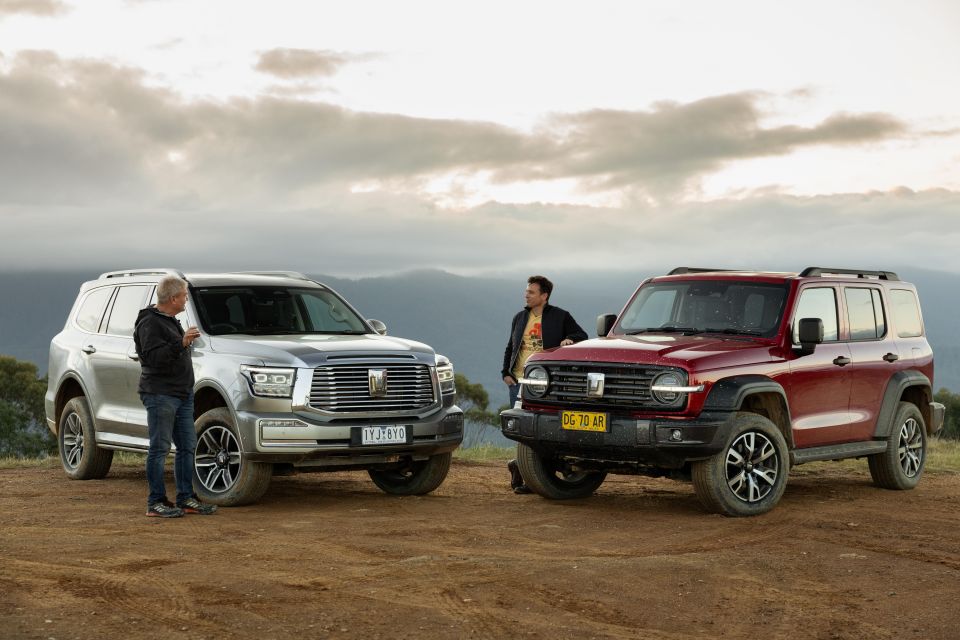
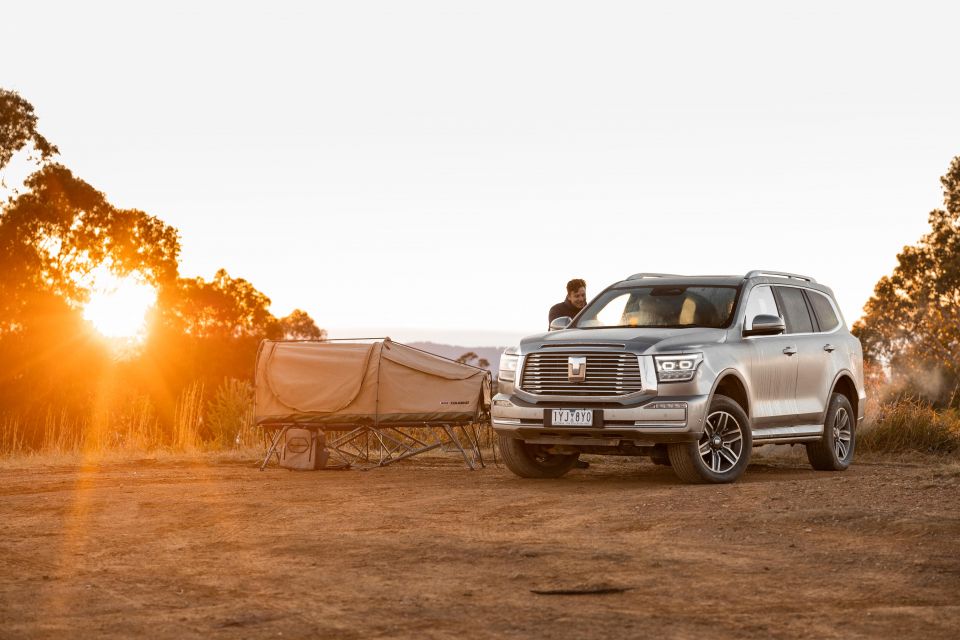

Where expert car reviews meet expert car buying – CarExpert gives you trusted advice, personalised service and real savings on your next new car.
PARTNER CONTENT
I still don’t know how GWM pulled off “Tank” as a name for the luxury Tank 500 and Tank 300, but it’s a clever strategy nevertheless.
Obviously these two aren’t your usual military-grade battle types as the name might suggest. They’re at the opposite end of the spectrum, with luxury and tech high on the agenda.
Rest assured both are suitably armed and ready for outdoor action thanks to an off-road arsenal including a low-range transfer case, front and rear differential locks, and plenty of undercarriage protection for those rutted trails.
And never mind the GWM Tank 500 is billed as a lavishly equipped three-row SUV with more tech and features than most equivalently priced rivals from more established brands costing twice the price.
The value-for-money proposition the Tank range offers is undeniable, especially with the level of equipment in the range-topping Ultra hybrid versions we had here. That’s before all four wheels have even veered off the beaten track.
Drive-away pricing reveals the bargain prices on offer for the Tank 500 large SUV in either of its trim grades. Entry-level is the Tank 500 Lux Hybrid, which is yours from $66,490.
The range-topping Tank 500 Ultra Hybrid costs $73,990 drive-away, but the list of kit you get is substantial.
Both versions are packed with a stack of features you’d expect to find on significantly pricier makes and models in the large SUV segment, but it’s the top-spec Ultra Hybrid we had here that trumps its rivals by some margin.

Try genuine Nappa leather-accented upholstery across all three seat rows, and it’s quilted. There’s a 14.6-inch touchscreen infotainment system married up to a 12.3-inch digital instrument cluster that’s customisable.
Even the base Tank 500 Lux gets automatic LED headlights, huge panoramic glass sunroof with sun blind, heated front seats, electronic rear differential lock, underbody protection, and wireless Apple CarPlay among an exhaustive list of kit.
The Ultra Hybrid version we had ups the ante substantially by adding heated, ventilated, and massaging front seats including memory and welcome functions, a truly superb 12-speaker Infinity sound system, powered side steps, and a soft-close power tailgate.
From a safety standpoint there’s a comprehensive suite of active driver assist systems giving it a five-star ANCAP safety rating (awarded in 2024) and across both model variants.
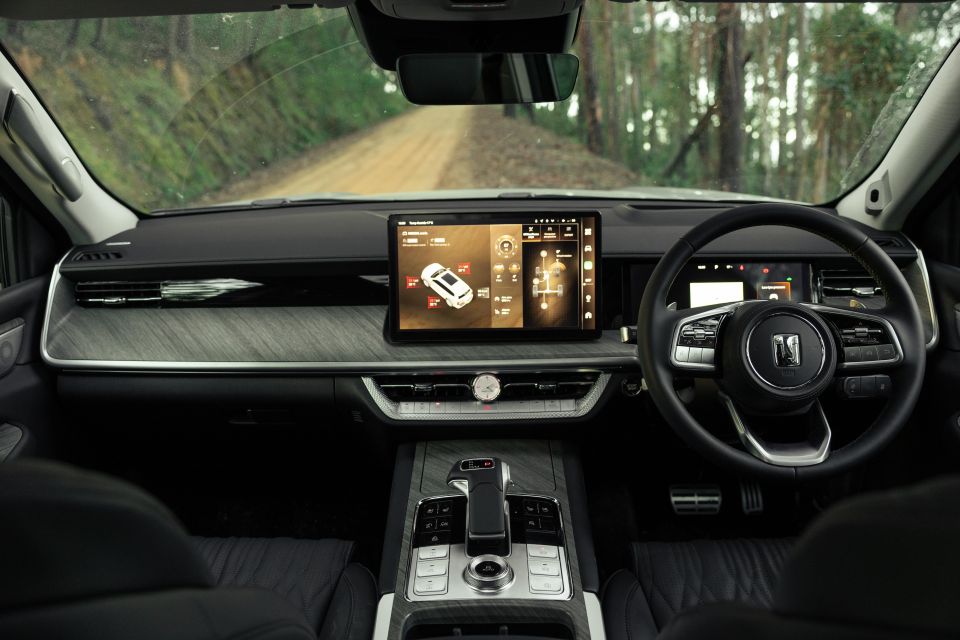
Even the powertrain punches well above its weight given its outputs. It might only be a 2.0-litre turbocharged petrol hybrid but it makes a thoroughly decent 255kW of power and a thumping 648Nm of torque through a nine-speed automatic transmission.
But sometimes when things look good on paper they don’t always measure up in the real world, which is why I decided to embark on an adventure into the great outdoors in the Southern Highlands, south of home base in Sydney with the Tank 500 and Tank 300 travelling in convoy to our planned accommodation at the superb Moss Manor in Moss Vale.
Problems arose when I decided to invite Channel 7’s James Tobin along to drive the smaller, but ever so versatile, Tank 300.
Here’s me arriving at Moss Manor and being greeting to a guided tour by friendly Manor host and manager Martine Folden, before being advised by James he had his own ideas about accommodation and indeed the trip itself.
I was then informed James would meet me on the trail en-route to the campsite and that there would be a swag waiting for me – unpacked of course.
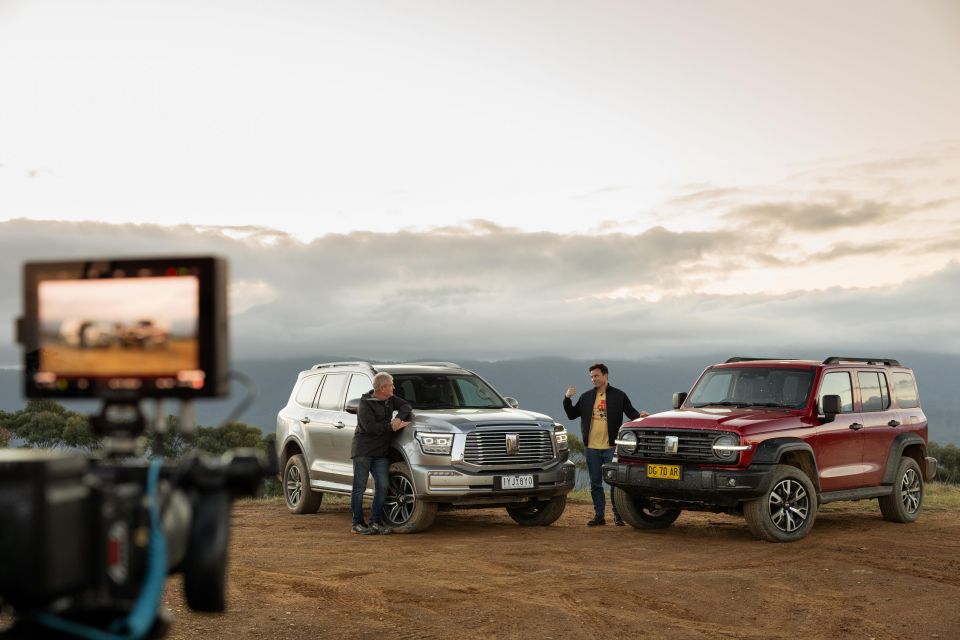
It was a bit disappointing not to be kicking back in front of the fire in the Manor, followed by a superb meal and a bed fit for royalty.
James is a genuine outdoors guy with his own swag and a level of camping craft and know-how well beyond my own in this area. I didn’t even know what a swag was, embarrassing as that might seem to many.
It’s not that I don’t love the bush or was clueless about bushcraft, because I’d camped many times with the cadets at school – but that was decades ago. I can’t say I enjoyed the experience – especially in the cold and wet conditions that almost always seemed to prevail.
Nevertheless, while our Tank 500 looked right at home in the stunning grounds of the luxurious Moss Manor itself, it’s got the right hardware to properly cover off the fire trails and river crossings we would encounter over the next couple of days.
On the open road the Tank 500 is a genuine eye-opener. The relatively small-displacement 2.0-litre four-pot engine was initially cause for concern – hybrid or no hybrid given the Tank’s size, ladder-frame chassis, and sheer weight well before I knew its peak power and torque outputs.
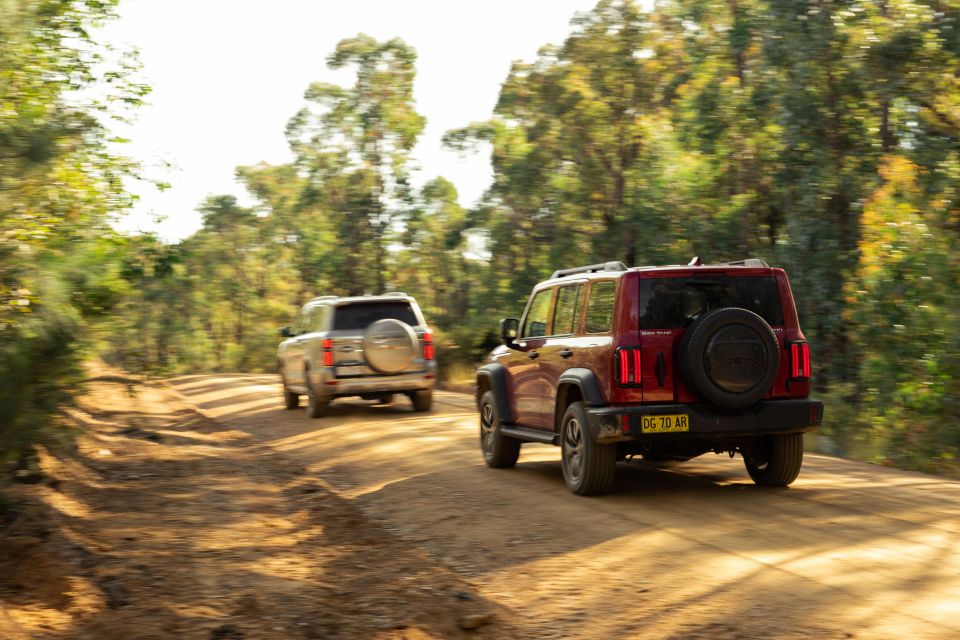
Of the 11 drive modes, Normal produces the most refined experience when you’re not using EV power alone. Driven sedately it’s remarkably refined and dare I say, quiet or very well insulated from the cabin. But even when you stomp on it in Sport, such as when joining a highway, engine noise remains minimal.
Gearshifts are also largely silky smooth. According to GWM the transmission is a first for China, and incorporates a 150kW electric motor between the engine and gearbox in what it calls a P2 layout.
The other highly commendable observation is the Tank 500’s excellent ride comfort over all manner of nasty surfaces – again, given its body-on-frame chassis which is actually called the TankPlatform.
The same goes for body control which is another pleasant surprise given the height and chassis constraints of a large, seven-seat SUV with hybrid assistance. The steering is nicely weighted and pointy enough so as not feel large on the road. There’s sound engineering at work here and a good suspension tune.
Cold wintery mornings with a bit of drizzle present more opportunity to get comfortable in a vehicle like the GWM Tank 500. Heated seats and steering wheel are two of its many creature comforts that you’ll welcome, and both work exceptionally well.

The Nappa leather-accented upholstery isn’t pretend, it’s the genuine article and exceedingly comfortable for it.
The console, screens, and dash are cutting edge, and the analogue clock looks good enough to have been fashioned by master watchmakers at Seiko – think Snowflake. It’s a proper jewellery piece, much like those used by some of the world’s most expensive automotive marques.
Compared with the centrally mounted infotainment display the instrument cluster looks small, but it actually measures 12.3 inches and is configurable with full mapping display as a the background if you want.
At night, there’s a shortcut menu that pulls down from the top of the screen that turns it all off for those wanting to chill and listen to your favourite playlist without the glare of all that light.
The good thing is you’ll be doing so through the Tank 500’s exceptional 12-speaker Infinity audio system. And like my Bose earbuds, it’s noise cancelling for that perfect listening environment.
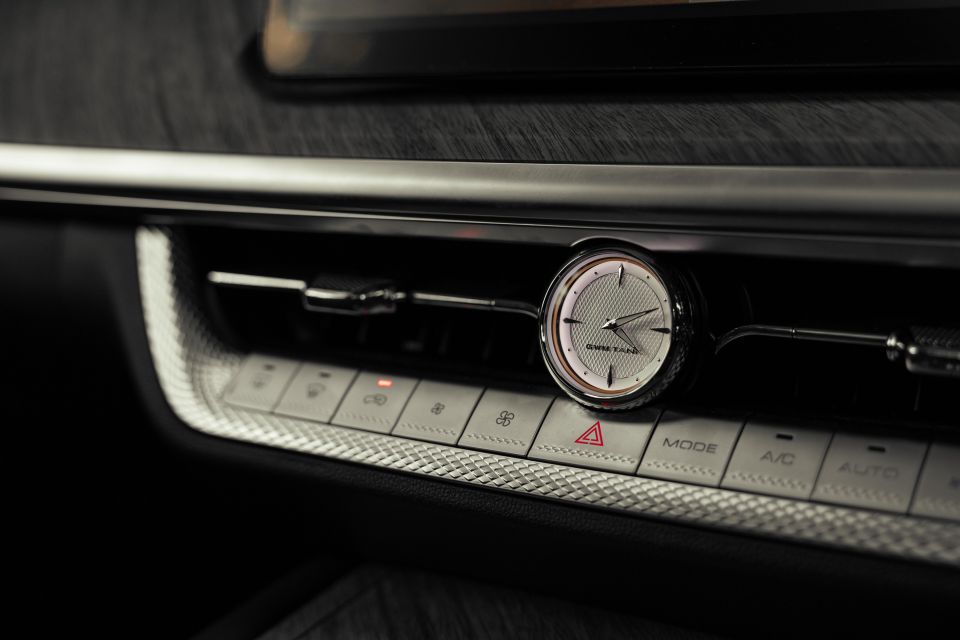
Even the start button looks and feels like cut glass, not unlike an Aston Martin. In fact, there are just so many features given the price point.
At just over five metres long the Tank 500 isn’t massive like some makes and models, but it still also offers an inordinate amount of cabin and storage space – in all three seat rows.
The centre console is wide and features deeper-than-usual cupholders and a bin with a convenient sliding tray for keys and sunnies. Forward of that is a sticky rubber wireless charging pad angled so it won’t easily dislodge, even off-road.
Further aft, there’s a ton of leg and headroom in the second row despite the full-length panoramic roof. The Tank 500 offers terrific vision all round thanks to the taller windows, which is a winner when you have young kids prone to carsickness.
You can also make use of GWM’s voice assistant. You just need to say, “Hey GWM, turn the volume up” but it’s good for a range of simple commands, from audio volume to temperature control.
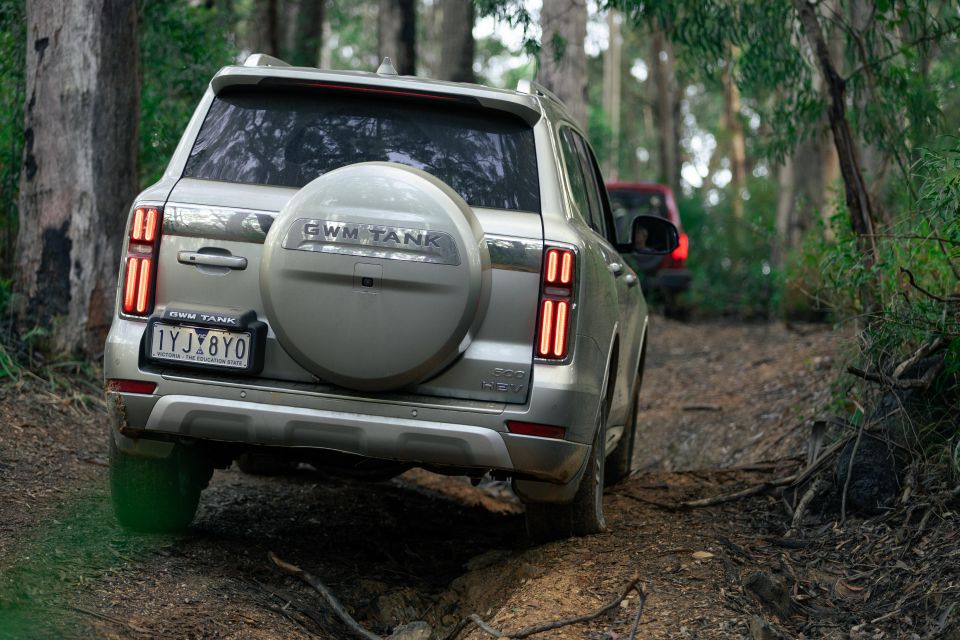
In the Ultra version you’ll find power-folding third-row seats which make it easy to access the huge amount of boot space. There’s 1459 litres with all rear seats folded, but even with the second row in place there’s still 795 litres and a full-size spare on the tailgate.
And for those in the second row, there’s climate control and stacks of room with a near-flat floor.
Never mind kids in the third row, they’re big enough to accommodate adults and you still get the same quilted leather upholstery, along with vents and fan-speed control.
James turned up late at the planned meeting place near a river crossing, but he’s brought steaks and snags from a local South Coast butcher so all is forgiven.
The GWM Tank 300 might be a different kind of vehicle to the Tank 500, but it’s still better equipped, more luxurious, and more off-road capable than its more expensive rivals, particularly in the Ultra Hybrid spec. No wonder he looks as fresh as a daisy after several hours behind the wheel, including a decent stint on the dirt.
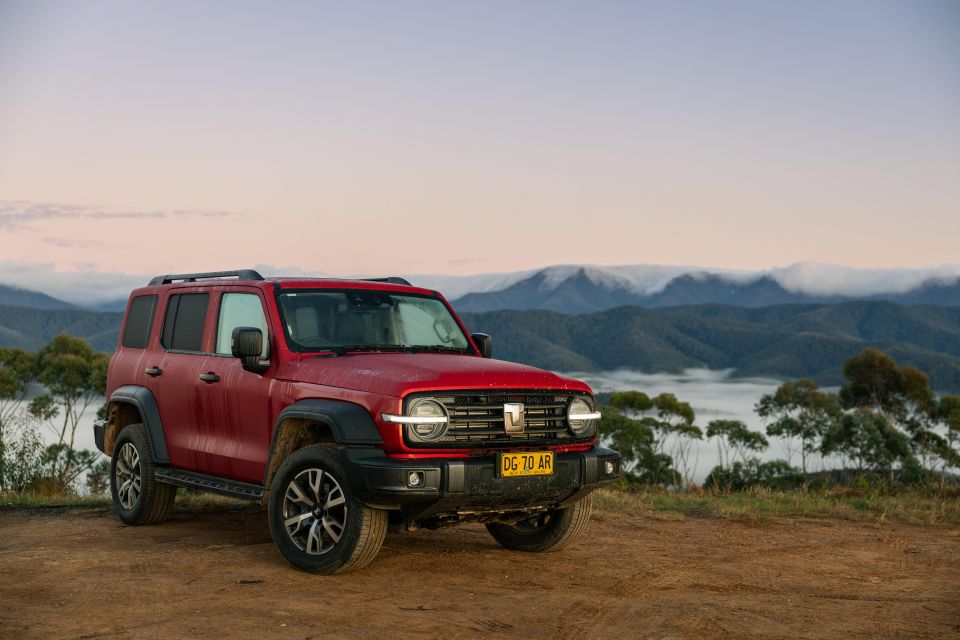
It’s a rugged but no less contemporary design with the latest in LED lighting tech, which gives it a thoroughly urban profile too. It looks the business on the tarmac but equally at home in the bush.
I know it’s not billed as the ultimate luxury mobile like the Tank 500 but there’s still plenty to like in here, starting with faux Nappa leather-accented seats. Never mind because they’re still sumptuously soft and quilted like the 500, as well as heated and cooled.
You’ve gotta love the heated steering wheel that also looks and feels like it’s wrapped in the same soft leather as the seats, and is an absolute godsend in the winter months.
The Tank 300 might be properly off-road capable with twin diff locks and bash plates underneath but that doesn’t mean it’s less enticing compared with big brother inside.
It’s absolutely bristling with tech including ambient lighting around the big touchscreen and the huge air vents. The Tank 300 is impressively comfortable for what is a thoroughly accomplished off-roader.
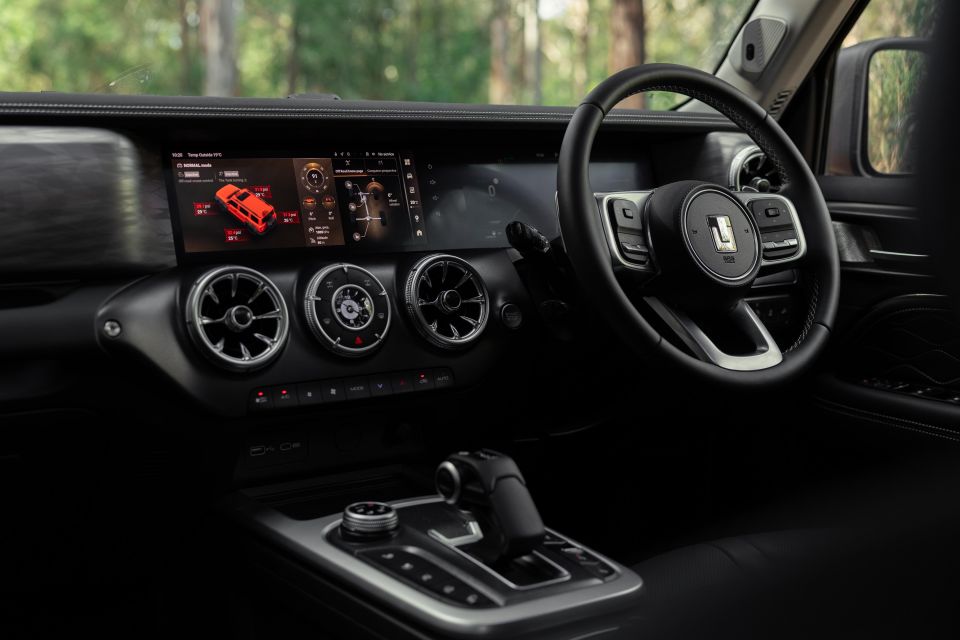
Just like the Jeep Wrangler, I wasn’t really expecting much in the way of passenger space in the GWM Tank 300. But that’s just not the case. This is a well packaged vehicle catering to a wide segment, not just because of the excellent rear legroom but also decent luggage space as the rear seats fold virtually flat.
Both Tanks would soon be put to the test getting to the proposed camp site – high up at a point with a seriously slippery trail full of deep ruts and tricky bits to contend with.
Although the Tank 300 has a slightly lower wading depth of 700mm compared with 800mm for the larger Tank 500, it has more aggressive approach and departure angles, and is more capable in these conditions for it.
I can’t help think GWM dealers would generate additional revenue if they offered set of name-brand A/T tyres as an alternative for those family campers amongst us.
With 4×4 low-range activated with a twist of the dial, along with Tank 300’s front and rear differential locks the climb was incident free and uneventful, as expected. River crossings with running water were conquered with ease by both Tanks.

Off-road suspension compliance is excellent on both models, but on the Tank 500 ride comfort is downright superb.
Both Tank models have a Tank Turn function. Just tapping a few buttons and dials activates the system, and it works flawlessly when needing to pivot in tight spots in the bush. Yet again, the technology on show here is impressive.
In the end I may have been better off dropping all the rear seats and climbing into my spanking new sleeping bag, given my borrowed swag apparently didn’t come with a pillow.
I ended up using my soft-shell jacket instead but must have hit the remote panic button around 4:00am. I’d zipped shut in the side pocket for fear of losing it, and hoped the crew thought it was a an animal that tripped the alarm.
You come away from a trip like this in two quite different vehicles with very different USPs with a huge amount of respect for what the GWM brand has achieved here for the money.
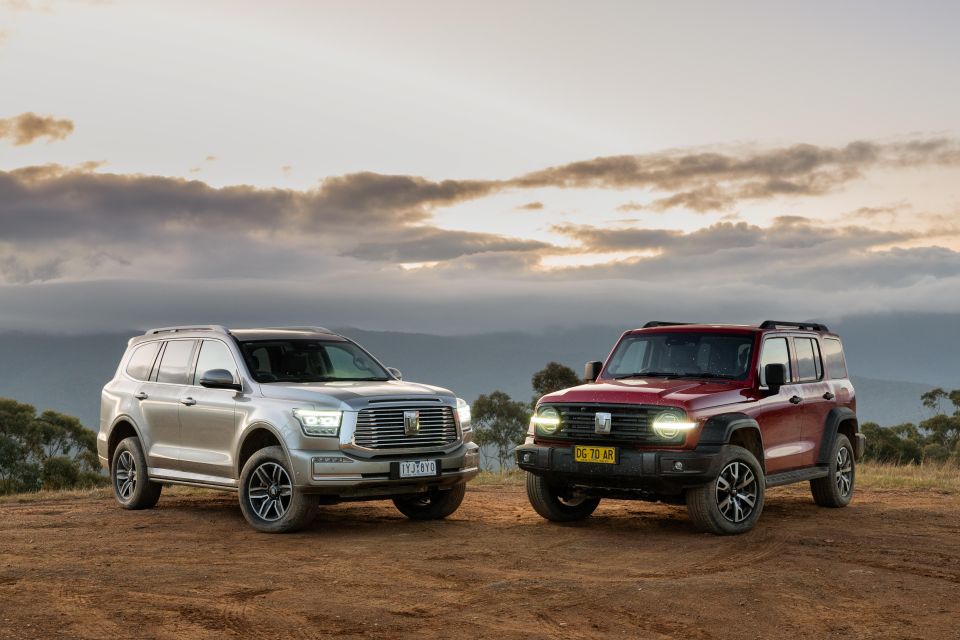
Then there’s the seven-year unlimited-kilometre warranty, seven years of roadside assist, and capped-price servicing across both the GWM Tank 300 and Tank 500 range.
Armed with solid engineering and unparalleled levels of equipment at affordable prices, the GWM Tank models clearly represent a direct threat to the more established brands but none of those can hope to match their value-for-money proposition.
Find out what makes these 4x4s a true stand out, both on city streets and rugged terrains.
Where expert car reviews meet expert car buying – CarExpert gives you trusted advice, personalised service and real savings on your next new car.
Save $4,000 on the previous driveaway price of $60,990. Offer ends 30th September 2025.


Neil Briscoe
4 Days Ago


Max Davies
3 Days Ago


James Wong
2 Days Ago


William Stopford
2 Days Ago


Josh Nevett
19 Hours Ago
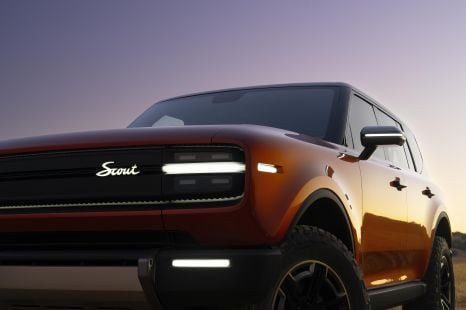

Ben Zachariah
16 Hours Ago